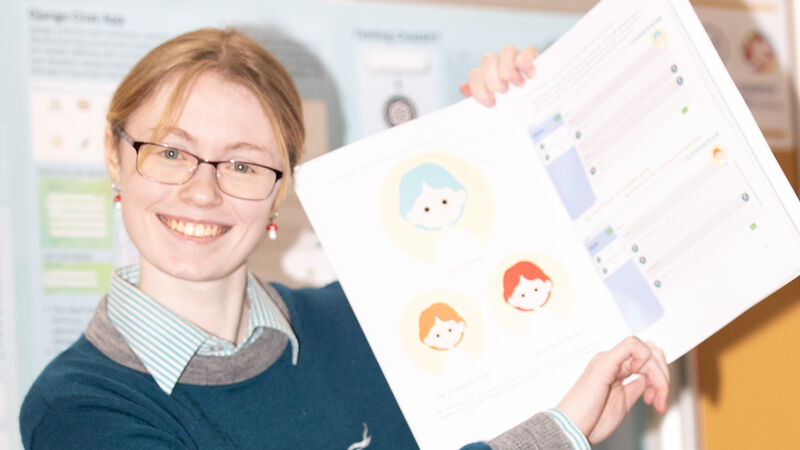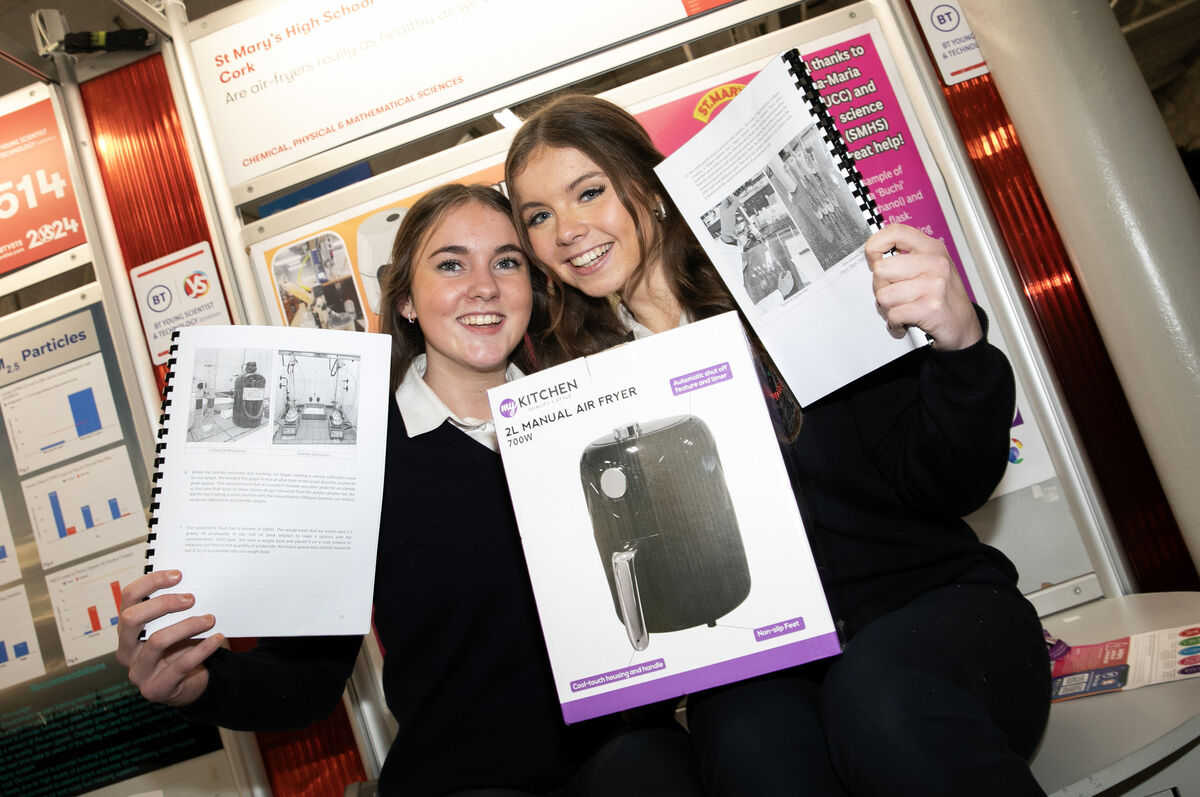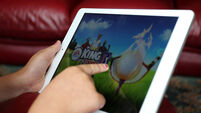BT Young Scientist: Online safety and air fryer health claims go under the microscope

Anne O’Donovan from Coláiste Choilm came up with a method of flagging and preventing child grooming online. Picture: Gareth Chaney/Collins
A child grooming detection app, the potential health implications of using air fryers, and teachers seemingly being oblivious to AI were among hundreds of projects showcased at this year’s BT Young Scientist and Technology Exhibition.
Over 1,100 students from across the country were raring to go on the first day of the exhibition which is now in its 60th year. Some 550 projects are being showcased at the exhibition, which runs until Saturday.
Anne O’Donovan from Coláiste Choilm in Ballincollig in Cork started working on her project two years ago at the age of 15 and was inspired to pursue it after her own experience online at a young age.
“I experienced child grooming when I was 12 and 13 and I managed to get away from it after 18 months, but I felt like I really needed to do something to protect other children,” she said.
Anne developed an app which uses artificial intelligence (AI) platform ChatGPT to see if it could accurately detect child grooming conversations within the first 10 messages received. She said:
She used 625 real conversation transcripts which involved grooming, each of which has about 1,000 messages which she accessed online through court documents from the US.
After inspecting the conversations, the app works by advising the user if the conversation is safe, concerning or dangerous which appear as avatars in varying colours based on the danger posed in the chat.
Parents also receive a notification advising them of the danger posed.
Anne also surveyed 334 children aged between eight and 12 in her local area across three primary schools finding that almost half (47%) had spoken to a stranger online.
“That number definitely increased because of the pandemic and everybody being inside and being online,” she said.
Some 66% had gamed with strangers online while boys are 19% more likely to speak to strangers online than girls, she found.
Elsewhere, the challenges AI poses when it comes to its use in schools were explored by Ruby Kelly and Muireann Mooney from St Anne’s Secondary School in Tipperary.
They carried out a survey on the topic of students and teachers within their school. Some 51% of students said they had used AI to complete homework or classwork while 95% of those said their teacher did not notice.

Despite this, 100% of the teachers surveyed said they would be able to spot the use of AI for classwork or homework.
After comparing work completed by students with AI-generated content, the two students then comprised a list of features and patterns that can be used to identify AI.
They found that students’ work was more creative, personal, and emotive while the AI was more informative and detailed but used American-English spellings, date formats, and vocabulary.
They believe AI should be positively harnessed in classrooms adding that its use is “inevitable”.
“A lot of people are starting to use it because It’s easier and gives you better words and phrases,” said Ruby.
Meanwhile, Miriam Finn and Kate McEvoy from St Mary’s High School in Midleton, Cork were “gutted” at their own project’s results after setting out to see if air fryers are as healthy as they are portrayed to be.

In University College Cork labs, they assessed if chips cooked in an air fryer contain more acrylamide than those cooked in an oven. They explained that acrylamide is a carcinogenic toxin which forms on food in both appliances, providing it with a crispy brown texture.
“We found that oven chips contain 317 times more acrylamide than the tolerable daily intake and the air fryer chips contain 1,767 times more acrylamide than the tolerable daily intake.
“We were gutted and shocked because we love our air fryers; we lob everything into them because they’re so handy,” Miriam said.












